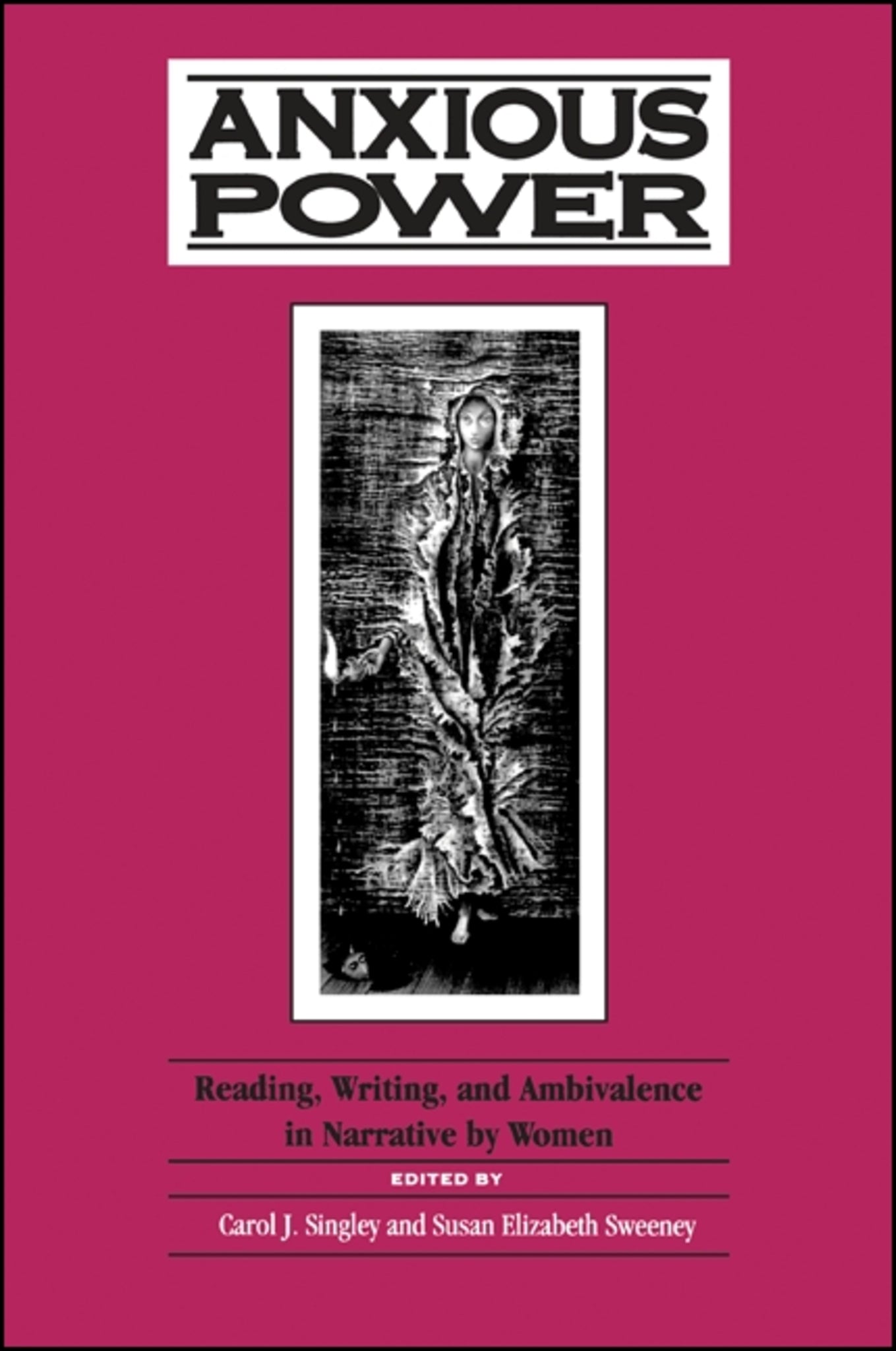We're sorry. An error has occurred
Please cancel or retry.
Anxious Power

Some error occured while loading the Quick View. Please close the Quick View and try reloading the page.
Couldn't load pickup availability
- Format:
-
01 July 1993

This book explains the conflicting feelings of anxiety and empowerment that women, historically excluded from masculine discourse, feel when they read and write, and it analyzes narrative strategies that reveal this ambivalence.
Anxious Power draws upon feminist literary theory, narrative theory, and reader-response criticism to define women's ambivalence toward language. It is the first collection to address issues of ambivalence in narrative by women, to trace those issues from the medieval period to the present, and to outline a theoretical framework for understanding them.
The contributors address a broad spectrum of female literary voices ranging from familiar British and American writers (Jane Austen, Charlotte Bronte, and Willa Cather), and those less well known (Jane Barker, Caroline Lee Henz, Susan Warner, Sarah Grand, and Fanny Howe), to European, Canadian, African-American, South and Latin American, and Asian American writers (Christine de Pizan, Marie-Catherine d'Aulnoy, Margaret Atwood, Harriet Jacobs, Toni Morrison, Clarice Lispector, Sandra Cisneros, and Maxine Hong Kingston).
Anxious Power considers forms of women's narrative ranging from fairy tales through romances, novels, and autobiographies, to feminist metafiction.


Preface
Acknowledgments
Introduction
Carol J. Singley and Susan Elizabeth Sweeney
EXPERIENCING ANXIOUS POWER
Female Language, Body, and Self
Carol J. Singley
EXPRESSING ANXIOUS POWER
Formal Strategies in a Female Narrative Tradition: The Case of Swann: A Mystery
Susan Elizabeth Sweeney
PART I: ANXIETIES OF AUTHORSHIP
Christine Antygrafe: Authorial Ambivalence in the Works of Christine de Pizan
Christine Moneera Laennec
Our Bodies / Our Texts?: Renaissance Women and the Trials of Authorship
Wendy Wall
A Politics of Disguise: Marie-Catherine d'Aulnoy's "Belle-Etoile" and the Narrative Structure of Ambivalence
Patricia Hannon
Galesia, Jane Barker, and a Coming to Authorship
Kathryn R. King
PART II: "MY BOOK MY PEN AND MY—LOVER": READING, WRITING, AND ROMANCE
The World as Battleground in Jane Austen's Persuasion
Julia Giordano
"This Altogether Precious tho Wholy Worthless Book": The Diary of Mary Guion, 1800-1852
Martha Tomhave Blauvelt
Power and Resistance in Harriet Jacobs' Incidents in the Life of a Slave Girl
Debra Humphreys
Mirroring the Mother-Text: Histories of Seduction in the American Domestic Novel
Elizabeth L. Barnes
Charlotte Bronte and Desire (to Write): Pleasure and Prohibition
Patricia E. Johnson
Sarah Grand's The Beth Book: The New Woman and the Ideology of the Romance Ending
Terri Doughty
Forbidden Reading and Ghostly Writing in Edith Wharton's "Pomegranate Seed"
Carol J. Singley and Susan Elizabeth Sweeney
PART III: DEVELOPING NARRATIVES OF DIFFERENCES
Willa Cather and the Fiction of Female Development
Judith Fetterley
"How Do We [Not] Become These People Who Victimize Us?": Anxious Authorship in the Early Fiction of Joyce Carol Oates
Brenda O. Daly
Receiving the Other: The Feminine Economy of Clarice Lispector's The Hour of the Star
Deborah J. Archer
"What There Was before Language": Preliteracy in Toni Morrison's Song of Solomon
Deborah L. Clarke
Literary Tricksterism: Maxine Hong Kingston's The Woman Warrior: Memoirs of a Girlhood Among Ghosts
Bonnie TuSmith
Different Voices: The Re-Bildung of the Barrio in Sandra Cisneros' The House on Mango Street
Leslie S. Gutierrez-Jones
PART IV: READING AND WRITING EMPOWERMENT
Ambiguous Benefits: Reading and Writing in Feminist Metafiction
Gayle Greene
Letters from Nowhere: Fanny Howe's Forty Whacks and Feminine Identity
Johnny Payne
Scripted, Conscripted, and Circumscribed: Body Language in Margaret Atwood's The Handmaid's Tale
Sheila C. Conboy
Discourse as Power: Renouncing Denial
Diane P. Freedman
Notes on Contributors
Index



